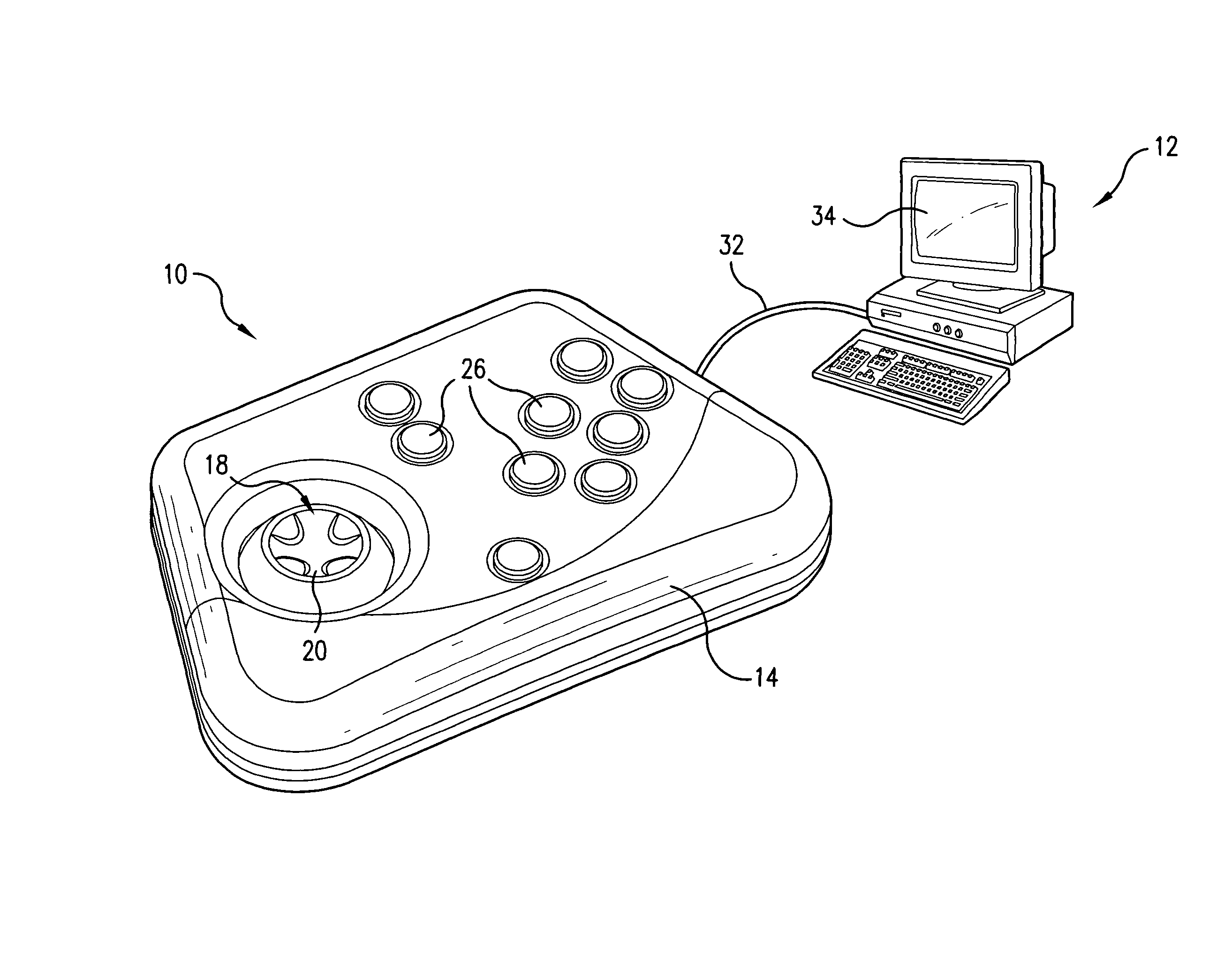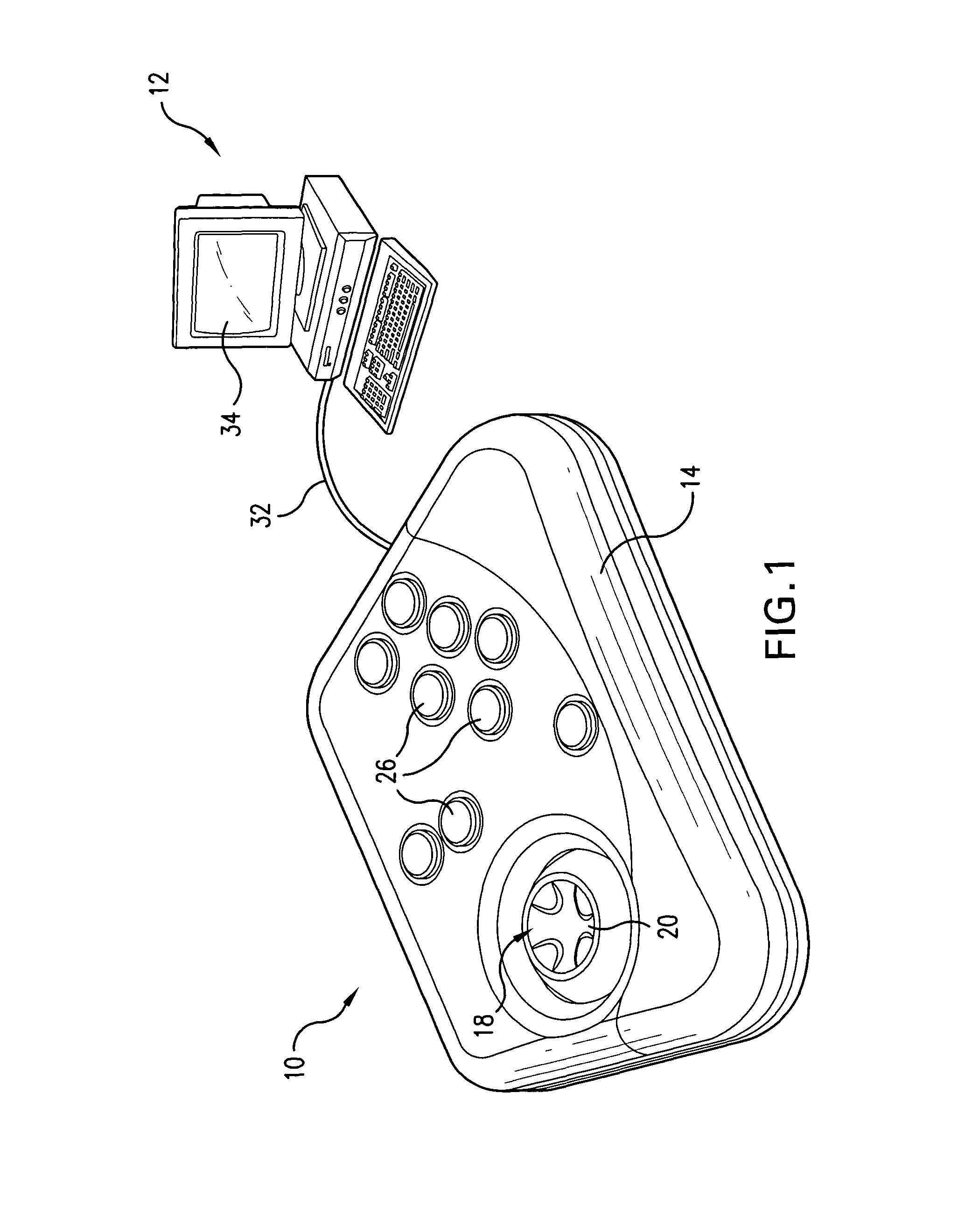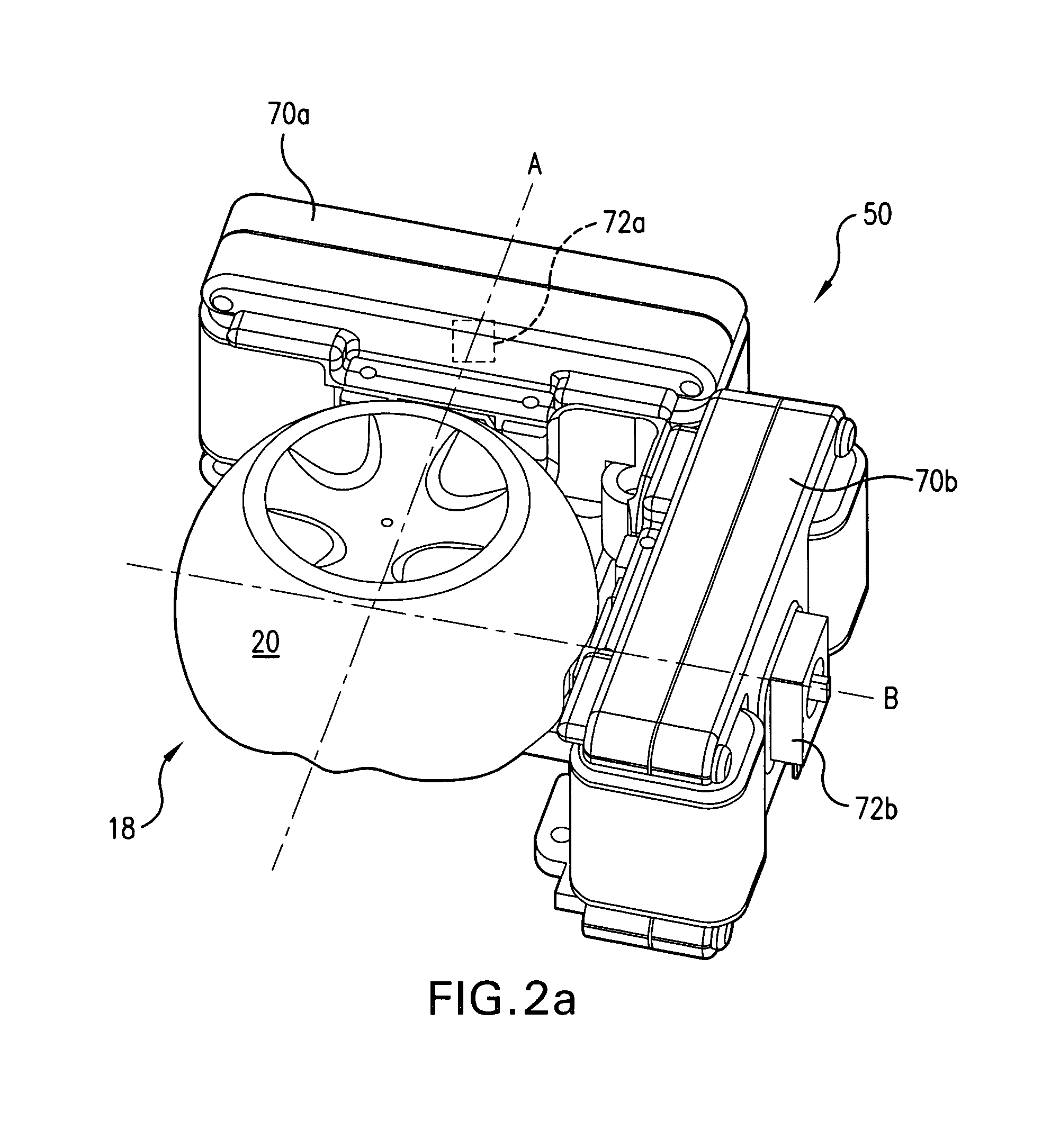Force output adjustment in force feedback devices based on user contact
a feedback device and user technology, applied in the field of interface devices, can solve the problems of generating undesirable motion on the manipulandum, distracting and non-immersive forces on the user, and form of deadman operation has some drawbacks, so as to reduce the level or stop the force output and increase the magnitude of the force
- Summary
- Abstract
- Description
- Claims
- Application Information
AI Technical Summary
Benefits of technology
Problems solved by technology
Method used
Image
Examples
Embodiment Construction
[0028]FIG. 1 is a perspective view of one example of a force feedback interface device 10 which can be used with the force adjustment features of the present invention. The device is used for interfacing a user with a computer generated environment implemented by a host computer 12.
[0029]Interface device 10 of the described embodiment is in the form of a handheld controller, of similar shape and size to many “gamepads” currently available for video game console systems. A housing 14 of the interface device 10 is shaped to easily accommodate two hands gripping the device. In the described embodiment, the user accesses the various controls on the device 10 with his or her fingers. In alternate embodiments, the interface device can take a wide variety of forms, including peripheral devices that rest on a tabletop or other surface, stand-up arcade game machines, laptop devices or other devices worn on the person, etc.
[0030]A user manipulatable object 18 (or “manipulandum”) such as a for...
PUM
 Login to View More
Login to View More Abstract
Description
Claims
Application Information
 Login to View More
Login to View More - R&D
- Intellectual Property
- Life Sciences
- Materials
- Tech Scout
- Unparalleled Data Quality
- Higher Quality Content
- 60% Fewer Hallucinations
Browse by: Latest US Patents, China's latest patents, Technical Efficacy Thesaurus, Application Domain, Technology Topic, Popular Technical Reports.
© 2025 PatSnap. All rights reserved.Legal|Privacy policy|Modern Slavery Act Transparency Statement|Sitemap|About US| Contact US: help@patsnap.com



